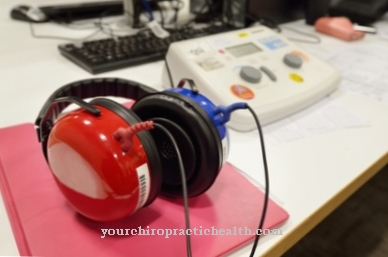In the Pulse oximetry the oxygen saturation of the arterial blood is determined in a non-invasive, photometric way by attaching a clip with infrared light sources and a receiver to the patient's skin.
This clip determines the light absorption of the blood on the basis of the fluoroscopy rate and, when converting into blood oxygen saturation, makes use of the fact that blood with different oxygen levels has different brightness and as a result absorbs light to different degrees. The measurement is not associated with any risks or side effects for the patient, but is often subject to measurement errors, such as those that can result from badly attached clips or painted fingernails.
What is pulse oximetry?

Pulse oximetry determines the oxygen saturation of the arterial blood in connection with the pulse.
Pulse oximetry determines the oxygen saturation of the arterial blood in connection with the pulse.The measurement method is a non-invasive, photometric and percutaneous procedure that determines the degree of light absorption or light remission under fluoroscopic skin. The oxygen content of arterial blood refers to the amount of oxygen in hemoglobin.
Depending on the oxygen load, the hemoglobin absorbs light in different ways, so that conclusions can be drawn about the oxygen content of the hemoglobin from the quality of the light absorption. The determined data of the light absorption are converted in the pulse oximetry into percentage oxygen content. The doctor then compares the calculated oxygen content with the reference values and, under certain circumstances, makes a diagnosis on the basis of this comparison. Values of 90 percent or less usually have to be treated with medication. Values of 85 percent are alarming for the doctor.
Function, effect & goals
Pulse oximetry is standard for intensive care units, ambulance services and anesthesia. Outside of hospitals, mountaineers and sports pilots sometimes use a pulse oximeter at high altitudes for self-monitoring and thus protect themselves from altitude sickness. The process also plays an increased role in the home care of premature babies and in some cases also care cases.
With every pulse oximetry, a saturation sensor in the form of a clip or adhesive sensor is attached to an easily accessible part of the body. The doctor usually attaches the clip to the patient's toe or earlobe. On one side the clip carries ending light sources in an infrared range. On the other hand, it is equipped with a photo sensor that takes on the role of a receiver. Since oxygen-saturated hemoglobin has a different brightness than oxygen-free hemoglobin, fluoroscopy results in a different absorption rate, which is measured by the clip's photosensor. At the same time, the clip detects the pulse in the capillary vessels so that measurements are not taken in tissue, but only in the arterial area.
In addition to the light absorption according to the Beer-Lambert-Bouguer law in the 660 nm range, the sensor also measures the absorption in the 940 nm range. For the purpose of taring, measurements are also taken once without the radiation from the measuring light sources. A monitoring monitor compares the measured values with a reference table and thus determines the percentage of oxygen saturation in the blood. Values between 97 and 100 percent are considered healthy. A special method of pulse oximetry is cerebral pulse oximetry, which measures through the skull instead of on the skin. In this procedure, the transmitter and receiver are attached to the forehead. The method can help the doctor to detect an oxygen deficiency in the brain, which under certain circumstances can reach life-threatening proportions.
In the brain, a saturation of 60 to 70 percent is considered the norm, although older people can also have lower saturations without any disease value. In cerebral pulse oximetry, however, 50 percent is the absolute lower limit. The measurement of blood oxygen in regions close to the brain plays a role in particular during an operation on blood vessels that supply the brain. If the blood oxygen drops alarmingly during such an operation, the doctor may have to interrupt the operation to protect the patient.
You can find your medication here
➔ Medicines for headaches and migrainesRisks, side effects & dangers
As a non-invasive procedure, pulse oximetry is not associated with any risks or side effects for the patient. However, there can be many sources of error in the measurement. If the peripheral blood circulation is poor due to a shock or cold, for example, this can significantly falsify the data.
In addition, intoxications are among the most common sources of error in pulse oximetry. For example, in the case of carbon monoxide poisoning, the pulse oximeter recognizes that the hemoglobin is charged. This can result in normal values for the oxygen content, although the hemoglobin actually transports carbon monoxide instead of oxygen. However, modern pulse oximeters are now able to determine the CO-saturated portion of hemoglobin and thus exclude these measurement errors. Even with modern devices, however, varnished fingernails can falsify the test results, as nail varnishes absorb light.
Only for purple and red lacquers this does not apply in most cases, so that no serious measurement errors can be expected with lacquered nails of this color. With acrylic nails, on the other hand, wrong values are always to be expected. A final source of error are infrared heat lamps, which usually cause incorrectly low values. When flying high or in the mountains, uneven terrain can also falsify the measurement data. In addition, since clips that slip or are poorly attached can produce incorrect results, the attachment of the probe should be carried out with the utmost care.
























.jpg)



